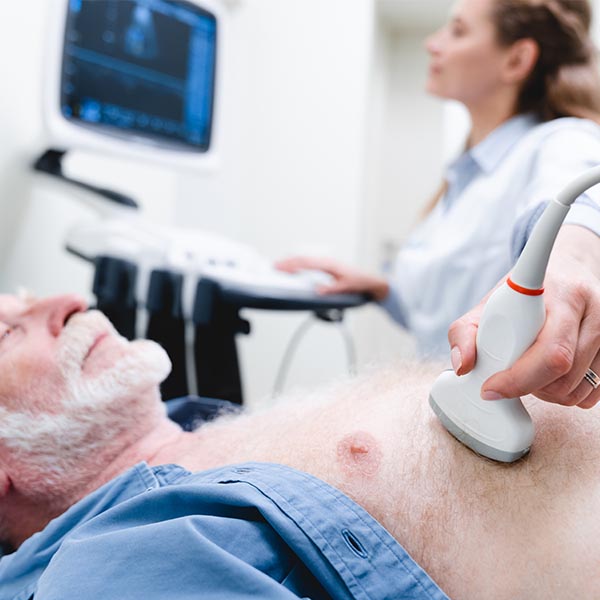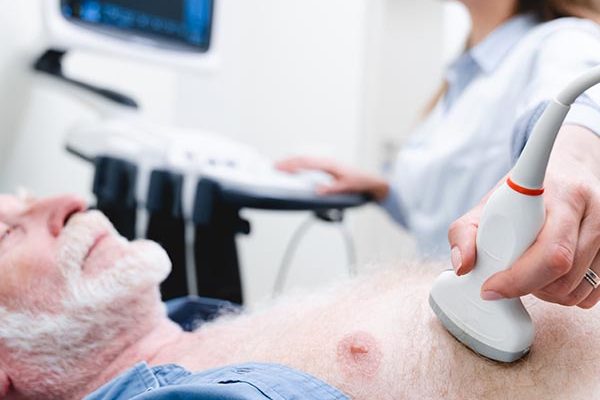Ultrasound is one of the most commonly used clinical imaging modalities, characterized by its real-time capability, excellent safety, affordability, and accessibility.
The Acoustic Sub-Aperture Processing (ASAP) is a novel ultrasound imaging technique that enhances visualisation of small blood vessels and enables quantification of perfusion. ASAP takes advantage of high-frame rate ultrasound with or without microbubble contrast agent to generate high contrast images of macro- and microvessels in vivo at multi-centimetre depth. It is a simple method that does not require additional hardware and can be easily integrated into advanced ultrasound imaging systems.
Proposed use
- Evaluate treatment response in cancer patients, especially in challenging situations where signal to noise ratio is low
- Evaluate microvascular flow / tissue perfusion in patients with cardiovascular diseases or diabetes
- Evaluate perfusion during kidney transplantation
- Useful in Functional Ultrasound for brain imaging and low signal to noise applications
Problem addressed
Ultrasound power Doppler is commonly used for measuring regional blood flow perfusion, and it is instrumental in imaging low flow in the microvasculature and to assess areas of ischemia and hyperemia in cases of inflammation.
The major limitation of power Doppler is its inability to distinguish Doppler signal from noise, therefore the low signal to noise affects the visualisation of smaller blood vessels.
Technology overview
The Acoustic Sub-Aperture Imaging (ASAP) technology is developed by a team led by Prof. Mengxing Tang. ASAP enhances vascular imaging by reducing noise and increasing the strength of Doppler signal.
ASAP generates better ultrasound images by adjusting the signal processing chain. Specifically, the ASAP method splits the signal received by the ultrasound transducer into two sets before image reconstruction. Signals in both sets are then compared to reduce the uncorrelated noise. As a result, the ASAP process boosts the contrast of the reconstructed vascular structures.
Features
- ASAP can process data at arbitrary high frame-rate (up to 10.000 frames per second) imaging data online. The number of average frames is improved by the proprietary noise suppressing technology
- The computational load of this process is the same as for Power Doppler
- ASAP achieves a fast reduction of noise and increases the image contrast by over 19dB compared to standard Power Doppler
- Rapid contrast enhancement with relatively small number of frame average makes the technique suitable to produce high contrast real time vasculature images
Benefits
- Capable of acquiring real time blood dynamics and high- contrast vascular morphology
- Higher signal-to-noise ratio, up to 19dB improvement over existing Doppler technique
- Image small vessel dynamics with good contrast, resolution and penetration depth
- Good candidate for real-time and post-processing method
- Simple signal processing that can be easily integrated in any ultrasound imaging system without increasing the computational load
Intellectual property information
US20190196013 A1 ACOUSTIC SUB-APERTURE PROCESSING FOR ULTRASOUND IMAGING
EP3472644 A1 ACOUSTIC SUB-APERTURE PROCESSING FOR ULTRASOUND IMAGING
GB2551376 A1 ACOUSTIC SUB-APERTURE PROCESSING FOR ULTRASOUND IMAGING
Inventor information
Dr Mengxing Tang
Professor Mengxing Tang leads the Ultrasound Laboratory for Imaging and Sensing (ULIS). His research mainly focuses on developing new imaging techniques of ultrahigh temporal and spatial resolution using ultrasound and signal processing, as well as new image analysis techniques, for quantifying physiological flow, tissue perfusion, tissue mechanical properties and molecular information in cancer, cardiovascular and neurological diseases.





